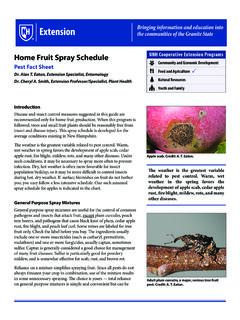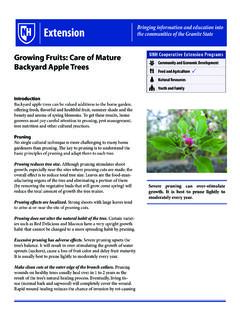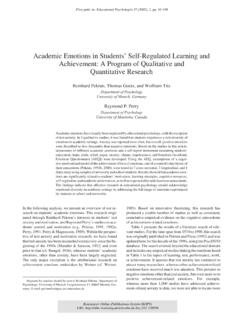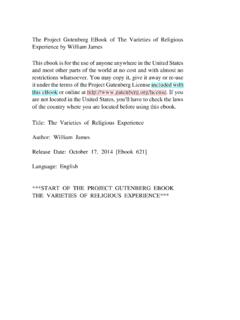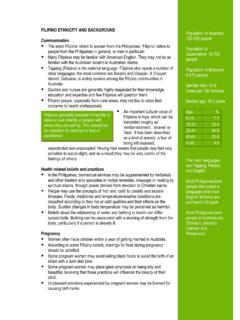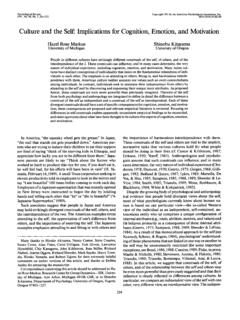Transcription of Unconscious Emotions, Conscious Feelings
1 November 2000 | Volume 58 | Number 3 The Science of Learning Pages 20-24 Unconscious emotions , Conscious Feelings Robert Sylwester Understanding the importance of emotions and Feelings is crucial to effective teaching and learning. Why do we have to do this? The question may irritate the teacher, but it is one of the most intelligent questions that a student can ask. Students and the rest of us, for that matter are loathe to expend cognitive energy unnecessarily, so assessing the importance of a task is a key initial step in cognition.
2 But how do we know what is important? Our brain's ability to unconsciously or consciously identify and assess the relevance and meaning of what we confront is just a small part of a very complex cognitive system. Recent developments in our understanding of the neurobiology of consciousness (Damasio, 1999; Edelman & Tononi, 2000) are providing educators with new understandings of how we recognize dangers and opportunities, and these insights pose important challenges to educators. Unconscious emotions Because our immediate environment is rich in dangers and opportunities that range widely in importance, our brain needs something akin to a thermostat to determine when a specific challenge is sufficiently important to activate the several systems that focus attention and develop appropriate responses.
3 Emotion, centered principally in a small set of subcortical brain systems, is our biological thermostat and central to cognition and educational practice. Although emotion is a somewhat vague word, recent scientific developments are clarifying the term and changing some previously held beliefs about the biology and function of emotion . Emotion is an innate, powerful, and principally Unconscious process. It alerts us to problems but doesn't bother us with processes that don't require Conscious attention. For example, emotion alerts us to an opportunity for food, but it doesn't continually report on the digestive process that follows eating unless the food turns out to be indigestible.
4 Further, we don't consciously choose to be emotionally aroused, and such arousal often interferes with what we are currently doing. In effect, our emotions tell us to stop doing what we are currently doing and to attend to a more important challenge. That dominance is possible because far more neural fibers project from our brain's emotional centers up into the logical/rational areas than the reverse. A sudden emotional stimulus can thus easily and immediately stop classroom activity and it's then difficult to get students to shut off their emotional arousal and resume what they were doing.
5 Effective teachers, realizing that the disruptive emotional arousal will continue until the problem is resolved, simply take the time to resolve the problem before resuming their previous activities. Emotion is perceptible in body language. A click of the thermostat announces a furnace's imminent response to a drop in room temperature. Our mostly Unconscious body language similarly reports our current emotional state. It is obviously useful for a social species to have a way to anticipate an imminent emotion-driven behavior and so it makes a lot of sense for teachers to become adept at reading and adapting to their students' body language.
6 Emotion responds most vigorously to high-contrast information. This tendency is biologically sensible. Emotion will merely monitor or ignore steady states and subtle change, staying the course rather than expending cognitive energy on what isn't problematic or fluctuating. Emotion can thus trick us into not recognizing the subtle body language that indicates a gradually encroaching problem until the problem suddenly becomes menacing. For example, the recent spate of school killings came as a surprise to many educators and classmates who had worked daily with the perpetrators and hadn't suspected a thing.
7 We are also surprised when an unnoticed former student turns out to be very successful. Schools need a monitoring system that can recognize both the manifest and masked dangers and opportunities that crowd the corridors. In a reckless search for economy at any cost, many schools dismiss counselors and others whose training and principal assignment focus on recognizing potential problems. We have discovered that the schools that ignore currently minor but emerging problems do so at their peril. Emotional arousal doesn't define or solve the challenge.
8 Instead, emotion activates the problem-solving processes that develop the response, just as our immune system separates the tasks of recognizing and responding to our body's microscopic invaders. Rather than solve the challenge, our emotions alert us to the challenge's existence a subtle but important distinction and then may continue to arouse us to maintain interest in the problem. Consider an emotionally arousing classroom game (such as a spelling relay) that has no relationship to the skill being taught. The game artificially hypes student emotion in an activity that probably would not of itself arouse enough interest to enhance learning.
9 Even artificial emotion can activate attention, which activates the cognitive systems that memorize the spelling of words. Ideally, though, an emotional connection to an activity should be related to the nature of the activity such as in role playing, simulations, or class projects thus providing a more easily remembered emotional context for the future use of the learned material. Although emotions don't solve our problems, they can bias the direction of the response. Temperament is a seemingly innate element of our emotional system that unconsciously predisposes emotional arousal toward danger or opportunity.
10 A person's temperament typically centers somewhere along a continuum between uninhibited and inhibited (Kagan, 1994), with boldness being processed principally in the left hemisphere and anxiety in the right hemisphere (Siegel, 1999). When emotionally aroused, the bold tend to be initially curious about a potential opportunity, and the anxious wary about a potential danger. Temperament enhances a quick and confident move toward a response. Because we frequently follow our temperamental bias, we tend to become quite competent with it over time.
